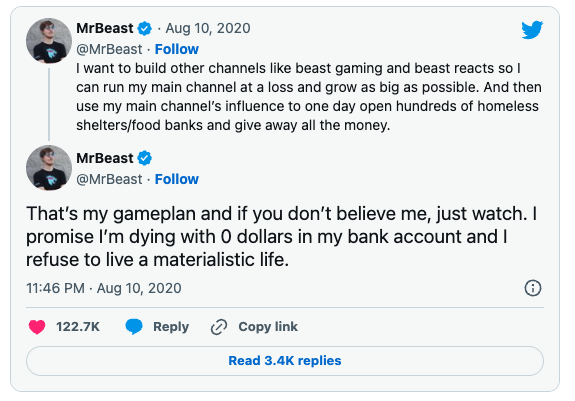The Purpose Paradigm: Unpacking 'Why'.
by Skye Phillips – Senior Manager Consulting

The buzzword of the moment in the world of business and management is Purpose. It seems like everyone is talking about it, and most big companies proclaim their purpose proudly. With so much noise surrounding the topic, it’s easy to become sceptical about whether organisational purpose is more than just another fad. But make no mistake, purpose is not just a buzzword – it is a powerful concept that can transform organisations and people.
Philosophical roots – what can we learn from history?
Philosophers have long recognised the importance of having a sense of purpose in life. As Friedrich Nietzsche famously stated, “He who has a why to live can withstand any how.” Similarly, in his book “Man’s Search for Meaning”, Victor Frankel revealed how prisoners in Nazi concentration camps were able to survive because they had a sense of purpose in their lives.
Purpose provides us with an anchor in turbulent times, giving us the strength to face challenges and overcome them. It provides us with motivation to strive toward our goals, even when they seem unattainable.
“He who has a why to live can withstand any how” – Friedrich Nietzsche
Other philosophers also recognised the importance of purpose. Aristotle, for example, believed that purpose was the key to achieving happiness. Socrates viewed purpose as central to living a fulfilling life. Kant believed that individuals needed to have a sense of purpose to be able to fulfil their moral obligations.
At its essence, purpose gives us a sense of fulfilment and allows us to feel like we are making a meaningful contribution to the world.
But what does the science say?
Cast forward a few thousand years, and we see that purpose is not just a philosophical concept; it is rooted in neuroscience. At the most basic level, our brains are wired to seek out purpose and meaning.
Countless studies have shown that people make decisions emotionally and justify them rationally. Conversely, data and facts may provide valuable insights, but they do not necessarily inspire action.
In sum, purpose and meaning can trump strategy and big data – and this is a big deal.
What does this mean for organisations?
In the modern-day world, purpose has become a powerful guiding light for organisations. Long gone is the paradigm of the organisation as a machine metaphor, where the job of managers was to tightly manage productivity and control behaviour. Rather, organisations are complex living systems and purpose is what gives them life.
Research has shown that having a clearly defined purpose is linked to a range of positive outcomes. Companies with a strong sense of purpose are more likely to attract and retain top talent, have higher levels of employee engagement and achieve a better financial performance.
A study published in Harvard Business Review by EY Beacon Institute found that purpose-driven companies make more money, have more engaged employees and more loyal customers, and are better at effecting innovation and change.
Similarly, research by Deloitte found that purpose-driven companies witness higher market share gains and grow on average three times faster than their competitors.
The demand for purpose is not just filtering upward from employees but from customers too. A high-profile global study by The Havas Group found that 73% of consumers believe brands must now act for the good of society, and 64% of people prefer to buy from companies with a reputation for purpose as well as profit.
The consequences of not getting it right are pretty damning. A recent study by McKinsey revealed that 47% of consumers who are disappointed with a brand’s stance on a social issue stop buying its products—and 17 percent will never return.
Case study in focus: Seabin – tapping into consumer demand for organisational purpose.
The aim of Seabin, a company that makes floating rubbish bins that collect plastic waste from the ocean, is to reduce marine plastic pollution. Their purpose statement, “Saving the planet, one marina at a time,” communicates their mission and goal clearly. Seabin was founded in 2016 by avid surfers Pete Ceglinkski and Andrew Turton, both driven by ‘trying to be good humans and doing good for the planet’. Seabin initially started out selling clean-up devices but in 2020 had a major pivot to a more scalable services model selling social impact data to corporate clients. While purpose was already permeating strongly through the organisation, with initiatives ranging from informing environmental policy to educating the community, the pivot to corporate sponsorship has taken it to another level by tapping into a growing demand from consumers looking to support purpose-led organisations.
In essence, Seabin are tapping into new markets by capitalising on consumer demand for corporations to demonstrate purpose. And it’s working. A great example of this is Nordic bank Lunar, who formed a partnership with Seabin to leverage a growing demand in their community to address plastic pollution. Lunar customers can opt to donate a portion of their spend, with Lunar topping up all donations by 2%. The customer demand for the program has been so high they’ve since expanded their efforts into Indonesia.
Social influencers leveraging the purpose pie
The gains of purpose alignment aren’t limited to traditional business models. Prominent social influencers and YouTubers have harnessed the power of purpose to achieve incredible success.
Mr Beast, with over 153 million subscribers, has become one of the most successful YouTubers by using his platform to make a positive impact on society. He has raised millions of dollars for charity and completed various acts of kindness, such as giving away cars, houses, and even islands.

Similarly, other notable YouTubers have leveraged purpose to build their brands and engage their audiences. Channels focused on sustainability, social justice, mental health, or animal rights have gained significant traction by aligning their content with a strong sense of purpose and tapping into social causes that resonate with their viewers.
Casey Neistat, a popular YouTuber, has been a vocal advocate for social justice issues such as racial inequality and police brutality. Similarly, YouTuber Lilly Singh has used her platform to promote gender equality and mental health awareness.
These successful YouTubers demonstrate the power of purpose in building a loyal and engaged following. By aligning their content with a clear sense of purpose, they have gained immense popularity and made a positive impact on society.
Aligning strategy, people and systems and to an organisation’s purpose can be challenging, but it’s critical for creating a purpose-driven culture. Here are some key steps to follow:
Craft a clear and compelling purpose statement
Create a purpose statement that reflects your organisation’s history, identity and reason for existence beyond making money. Make sure it’s clear, concise and compelling, and resonates with employees.
Tell stories to engage employees with the purpose
Use storytelling to help employees connect with the purpose. Share stories that demonstrate how the purpose has impacted the organisation and its stakeholders. This will help employees understand the purpose in a meaningful way.
Lead by example and exemplify the purpose
Leaders must lead by example and demonstrate the purpose in their actions and decisions. This will help employees see the purpose in action and encourage them to align their behaviour and decision-making with the purpose.
Align systems and processes to the purpose
Ensure that the purpose is embedded in the systems and processes of the organisation, from recruitment and training to performance management and reward systems. All these systems and processes should be designed to reinforce the purpose and encourage alignment with it.
Measure perceptions and alignment to the purpose
Regularly measure perceptions of purpose and alignment through surveys, focus groups or other methods. Use this information to identify areas where alignment with the purpose is strong and areas where it needs improvement. Then, adjust your strategies and tactics to improve alignment with the purpose.
Organisational purpose is a vital aspect of any business, providing a sense of direction and purpose that can guide all other efforts. It is more than a buzzword; it is a North Star that helps to define an organisation’s identity and reason for being. By following these steps, you can create a purpose-driven culture that inspires and motivates employees to achieve their goals and make a positive impact on society.
Have you listened to our culture podcast yet? Best Behaviour is your fortnightly deep dive into workplace culture, with guests from some of Australia and New Zealand’s most successful companies. Find the latest episode here.